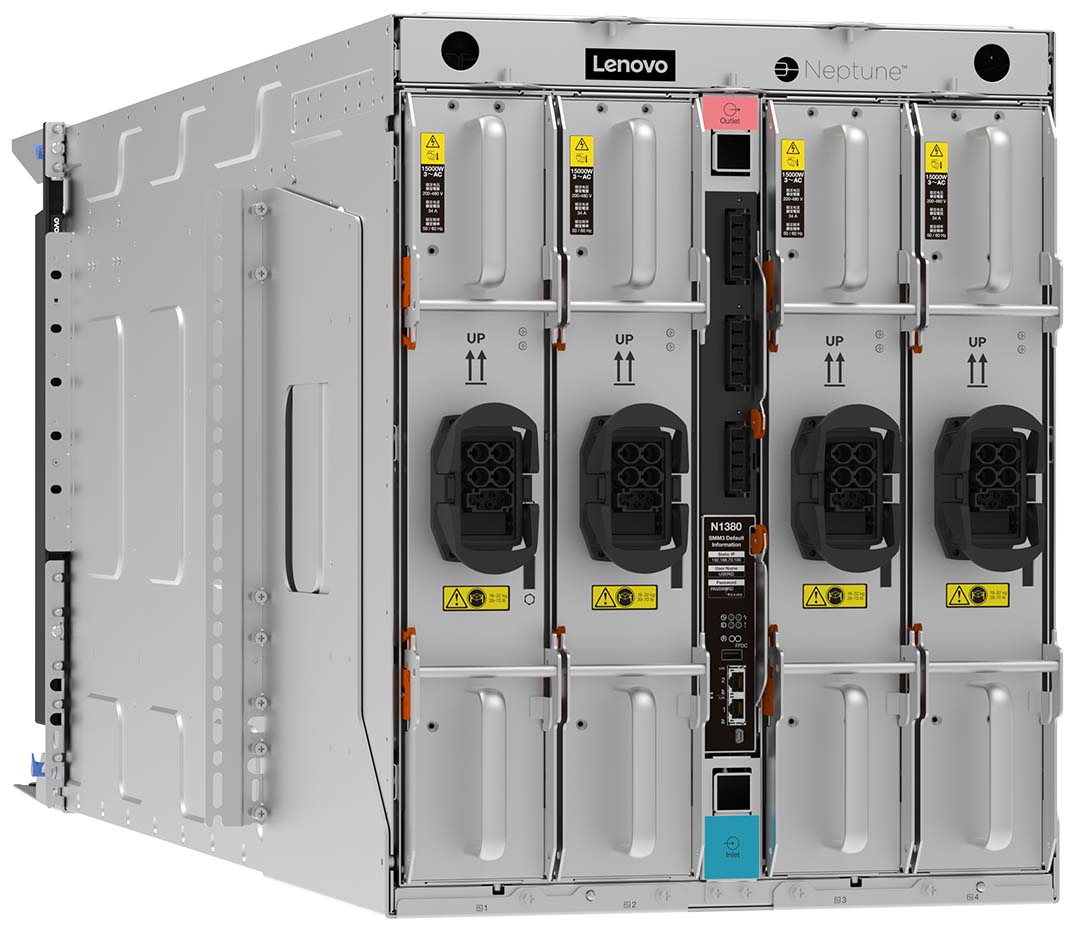Lenovo has unveiled the ThinkSystem N1380 Neptune, a 6th generation vertical liquid cooling technology that lets organisations build and run accelerated computing for generative AI (GenAI) while reducing data centre power consumption by up to 40%.

With ThinkSystem N1380 Neptune and the new ThinkSystem SC777 V4 Neptune, Lenovo is pioneering data centers in which 100KW+ server racks are running without the need for specialised data centre air conditioning. The technology uses a reimagined vertical liquid cooling chassis to deliver accelerated computing with advanced efficiency in a compact system that is 100% liquid cooled, eliminating the need for power-consuming fans.
Designed for industry standard 19-inch racks, organizations of any size can now leverage the highest accelerated computing available one tray at a time using standard power in an open ecosystem.
The ThinkSystem SC777 V4 Neptune supports the next-generation Nvidia Quantum-X800 InfiniBand and Spectrum-X800 Ethernet platforms for high-performance accelerated networking. In addition, the ThinkSystem SC777 V4 Neptune supports Nvidia AI Enterprise, a cloud-native software platform that streamlines development and deployment of production-grade AI solutions, including generative AI, computer vision, and speech AI.
Lenovo will deliver Nvidia GB200 rack systems that feature open-loop, direct warm-water cooling for the entire Nvidia GB200 Grace Blackwell system architecture with Nvidia NVLink interconnect, enterprise customers of any size can use the Lenovo ThinkSystem SC777 V4 Neptune to run trillion-parameter AI models that bring products to market faster, at lower cost and with higher energy efficiency.
With the advanced water cooling, the new ThinkSystem server allows critical components to operate at lower temperatures and effectively removes all heat from all components, including GPUs, memory, I/O, local storage, and voltage regulators. Combined, the innovations enable AI training and real-time LLM inference for models scaling up to 10 trillion parameters while increasing performance, energy-efficiency, and reliability in a compact, ultra-quiet system.
